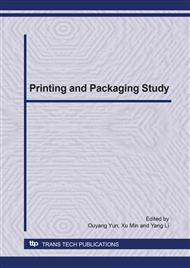p.36
p.40
p.44
p.48
p.52
p.56
p.60
p.64
p.68
Analyzing Color Light Additive Process Using Complex Frequency Spectrum
Abstract:
This paper aims at using complex frequency spectrum (CFS) algorithm to simulate human vision system. Considering that, any frequency monochrome light’s quantity of motion maps into corresponding CFS phase position, and turns it into monochromatic phasor. According to the nature entropy principle of balance, the so-called white balance means that all phasor signals will spontaneous conformity with balance. Therefore, general light with color consists of white light (color has been balanced) and color phasor (color has not been balanced). In order to forecast phasor addition result, we will give two evaluation methods synthesis efficiency and balance efficiency, using data of RGB matching spectral colors experiment W.D.Wright made in the 1920s, mapping the RGB values on complex frequency spectrum chromatic diagram, and calculating with vector sum method and the gained result has good pertinence with W.D.Wright. Furthermore, the applying balance efficiency also explains the reason of negative matching in the abstract.
Info:
Periodical:
Pages:
52-55
Citation:
Online since:
December 2010
Authors:
Keywords:
Price:
Сopyright:
© 2011 Trans Tech Publications Ltd. All Rights Reserved
Share:
Citation:


